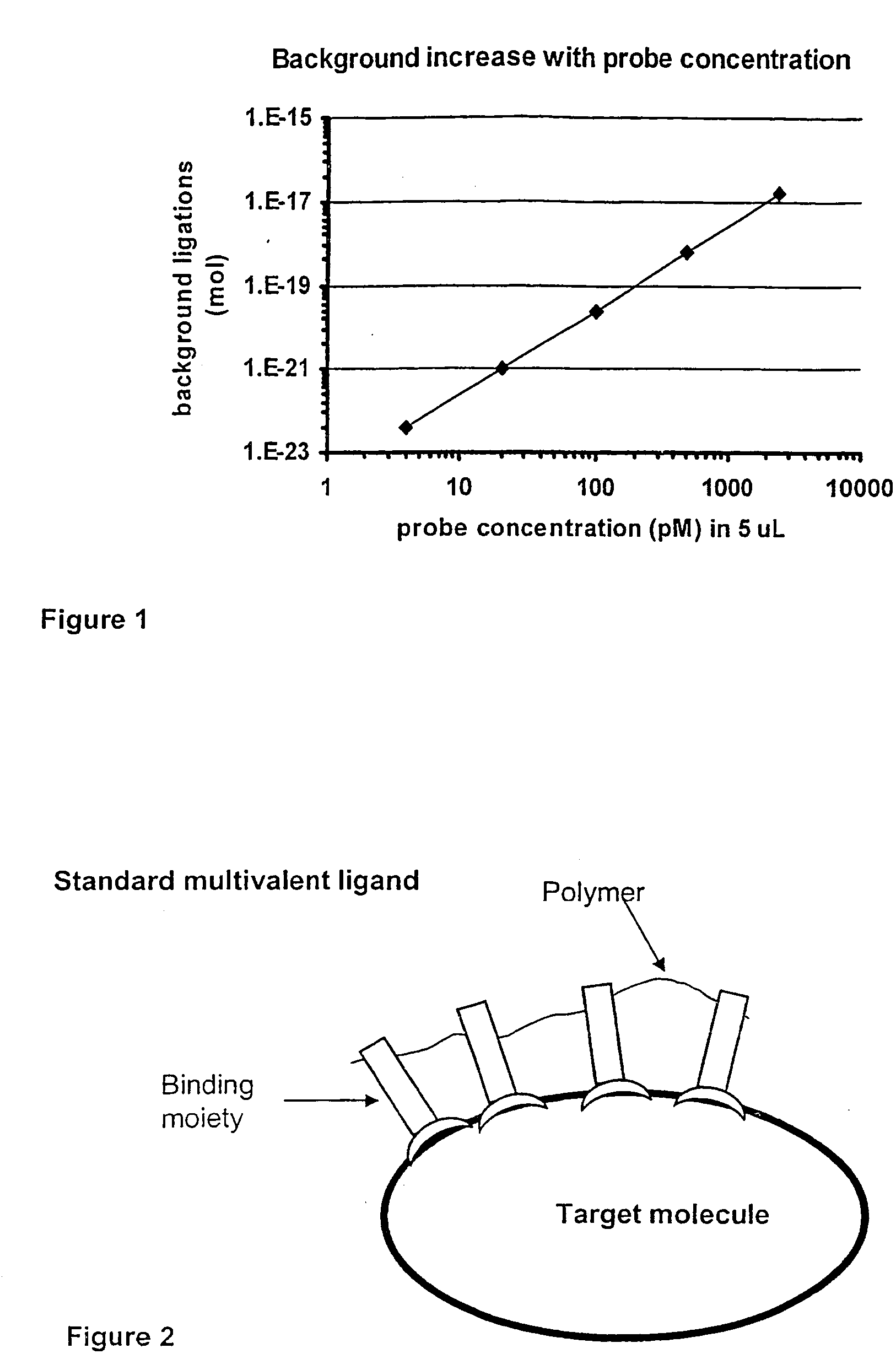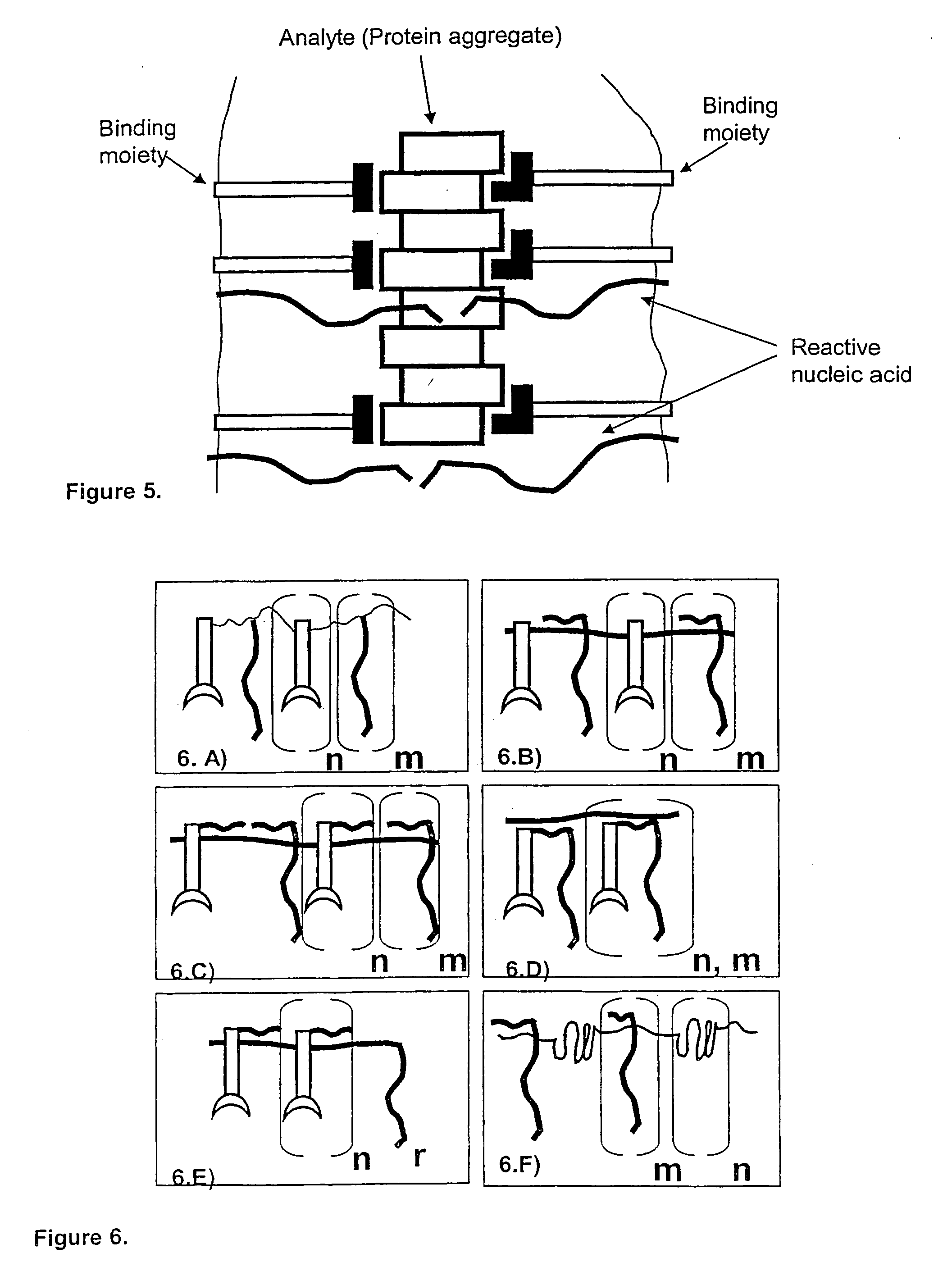Method and kit for proximity probing with multivalent proximity probes
a proximity probe and multi-valent technology, applied in the medical field, can solve the problems of large combined loss, and achieve the effect of increasing the affinity of proximity probes and facilitating the purification of proximity probes
- Summary
- Abstract
- Description
- Claims
- Application Information
AI Technical Summary
Benefits of technology
Problems solved by technology
Method used
Image
Examples
Embodiment Construction
The binding of one multivalent proximity probe to a monomeric target analyte will not yield any increase in binding affinity since the dissociation of a binding will let the analyte to freely diffuse away from the multivalent proximity probe. But when both multivalent proximity probes with specificity to separate sites on the analyte are complexed with the analyte, several copies of the target analyte becomes “sandwiched” in between the multivalent proximity probes, FIG. 4. Since several targets are bound, cooperative effects greatly increase the binding strength of multivalent probe-target-multivalent probe complexes, increasing the assay sensitivity. A kind of “zippering” effect is achieved where each individual binding event stabilizes the others. At the start of the incubation of the multivalent proximity probe pair with the analyte sample a multitude of complexes will form with various amounts of sandwiched targets. As the incubation time progresses the most stable complex typ...
PUM
| Property | Measurement | Unit |
|---|---|---|
| affinity | aaaaa | aaaaa |
| specific affinity | aaaaa | aaaaa |
| concentration | aaaaa | aaaaa |
Abstract
Description
Claims
Application Information
 Login to View More
Login to View More - R&D
- Intellectual Property
- Life Sciences
- Materials
- Tech Scout
- Unparalleled Data Quality
- Higher Quality Content
- 60% Fewer Hallucinations
Browse by: Latest US Patents, China's latest patents, Technical Efficacy Thesaurus, Application Domain, Technology Topic, Popular Technical Reports.
© 2025 PatSnap. All rights reserved.Legal|Privacy policy|Modern Slavery Act Transparency Statement|Sitemap|About US| Contact US: help@patsnap.com



